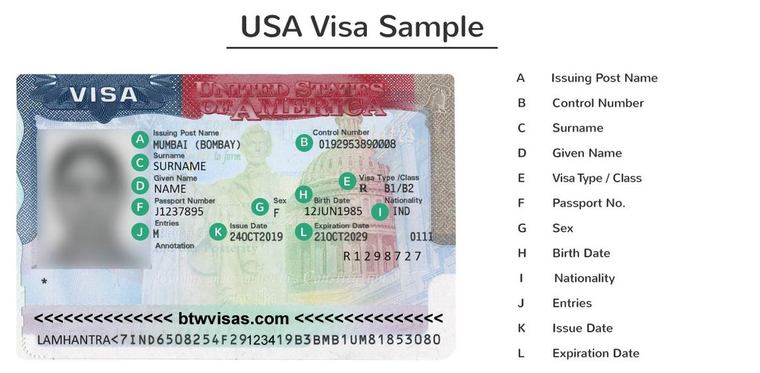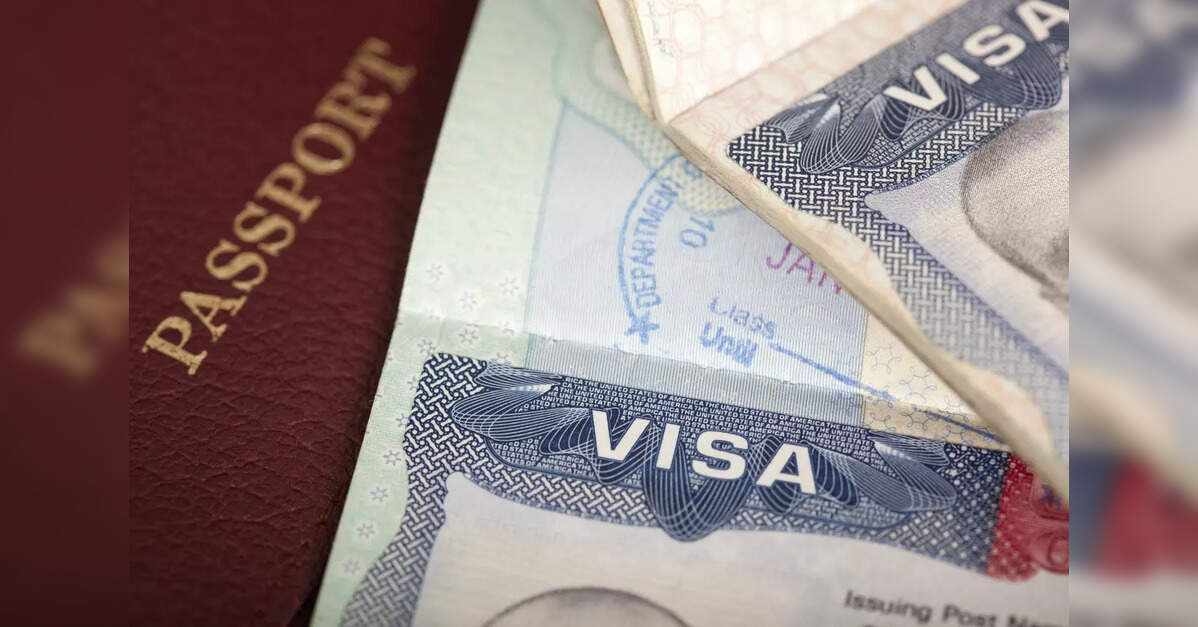Beginner’s Guide to US Visas For Indian Citizens
Unlocking Opportunities: Important Info on United States Visas for Indian People
Maneuvering the complexities of U.S. visa alternatives is necessary for Indian residents intending to check out chances in the United States. With numerous groups ranging from short-term site visitor visas to paths for irreversible residency, comprehending the nuances of each can substantially affect one's trip. This conversation will certainly highlight essential information, including application treatments and eligibility standards, that can encourage people in their search of brand-new experiences. As we unload these necessary aspects, the inquiry occurs: what approaches can one employ to improve their opportunities of a successful application?
Overview people Visa Kind
When going across the complicated landscape people migration, understanding the different kinds of visas available is crucial for Indian people looking for access right into the USA (US Visas For Indian Citizens). The US migration system is largely categorized right into two wide classifications: immigrant visas and non-immigrant visas
Immigrant visas are designated for those planning to live completely in the US. These consist of family-sponsored and employment-based visas, where applicants normally require a sponsor. Non-immigrant visas, on the various other hand, deal with individuals seeking momentary home, such as travelers, service site visitors, and those traveling for particular functions like work or study.
Within the non-immigrant classification, several visa types exist, consisting of B-1/ B-2 for service and tourist, H-1B for specialty line of work, L-1 for intra-company transferees, and O-1 for people with extraordinary capabilities. Each visa has distinct eligibility needs and application procedures, necessitating detailed study to establish the suitable category.
Understanding these classifications is vital for Indian people, as it enables them to browse the application procedure more effectively, ensuring they select the appropriate visa type to satisfy their specific requirements and objectives. US Visas For Indian Citizens.
Pupil Visa Options
For Indian residents striving to examine in the United States, trainee visas offer an essential path to seek academic opportunities. The primary visa classifications for students are the F-1 and M-1 visas.
The F-1 visa is marked for academic pupils enrolled in a full time program at an approved establishment, such as universities and universities. This visa permits pupils to engage in on-campus employment and, under particular problems, join optional functional training (OPT) after finishing their level, supplying useful work experience in their field.
On the other hand, the M-1 visa is meant for trade or non-academic programs. It satisfies pupils going after technical or occupation training, allowing them to enlist in non-degree programs. M-1 visa owners may join sensible training, however it is usually much more minimal contrasted to the F-1 category.
To get a trainee visa, applicants should safeguard admission to an U.S. institution, receive a Form I-20, and show economic capacity to support their education and learning and living expenses. Recognizing these visa choices is considerable for Indian people preparing to commence their educational trip in the United States.
copyright Categories
Several Indian citizens seeking employment possibility in the United States may think about numerous copyright groups customized to various expert requirements and certifications. The most famous job visa is the H-1B visa, developed for knowledgeable workers in specialized occupations requiring a college level or its equivalent. It enables united state companies to momentarily use international employees, with a cap on the number of visas provided every year.
Another essential classification is the L-1 visa, which assists in the transfer of employees within multinational firms. The L-1A visa is for supervisors and execs, while the L-1B visa is for workers with specialized understanding.
The O-1 visa satisfies individuals with extraordinary capacities in their field, consisting of scientific research, arts, or company. For farming or seasonal job, the H-2A and H-2B visas are available, allowing employers to hire international workers for short-lived placements.
Family-Based Migration
Family-based immigration offers a pathway for united state citizens and legal long-term residents to rejoin with their family members from India. This immigration classification is fundamental for maintaining familial bonds and assisting in the assimilation of household members into American culture. U.S. citizens can petition for instant relatives, consisting of partners, kids, and parents, without facing annual limits on visas. This expedited procedure considerably reduces waiting times for these close household connections.
On the other hand, lawful long-term homeowners might sponsor spouses and single kids, yet they are subject to yearly caps, causing longer wait times. The family-sponsored immigration system is separated into 2 major categories: immediate relatives and family preference classifications. The previous includes those who have a direct connection with an U.S. person, while the latter includes farther relatives, such as brother or sisters and wedded kids of people, and children of legal long-term homeowners.
For Indian people looking for family-based migration, recognizing the nuances of this system is essential. Correct documentation and adherence to application methods are vital for effective sponsorship. By maneuvering through these complexities, family members can work in the direction of rejoining and building their lives together in the United States.
Irreversible Residency Process
The process of getting permanent residency in the USA involves numerous vital visa categories tailored for Indian people. Recognizing the application steps, consisting of needed documents and qualification criteria, is vital for a successful end result. Additionally, potential applicants should understand the anticipated timeline and specific demands connected with each group.
Visa Categories Overview
While traversing the complexities of the U.S. immigration system, Indian residents seeking long-term residency must familiarize themselves with numerous visa classifications customized to various conditions. The primary pathway for permanent residency is via employment-based visas, which are classified into a number of preferences, including EB-1 for individuals with phenomenal capabilities, EB-2 for experts holding innovative levels, and EB-3 for proficient workers. Each group has specific qualification demands and processing times.

Variety visas, although restricted in number, supply a chance for individuals from underrepresented nations to request irreversible residency via a lotto system. Additionally, humanitarian options such as asylum and evacuee standing offer pathways for those dealing with oppression.
Comprehending these visa classifications is essential for Indian citizens, as they greatly affect the approach for acquiring permanent residency in the United States. Each group's subtleties and demands require careful factor to consider to line up with private scenarios and goals.
Application Process Actions
Guiding the application procedure for permanent residency in the United States involves a number of crucial steps that have to be carefully complied with to ensure an effective result. The trip typically begins with determining the ideal immigration classification, such as employment-based or family-sponsored visas. Candidates must collect necessary documents, including evidence of qualification, financial statements, and personal recognition.
As soon as the group is identified, the next step is to submit the Type I-130 (Request for Alien Family Member) or Type I-140 (Immigrant Request for Alien Worker), depending upon the basis of the application. Following the approval of the request, candidates will certainly need to complete the National Visa Center (NVC) processing by sending the required costs and types.
Next, the applicant has to go through a medical checkup and get cops clearance certificates. Once these are finished, an interview will certainly be set up at the U.S. consulate or consular office. It is vital to prepare completely for this meeting, as it can greatly influence the decision on the application. Finally, upon authorization, the candidate will receive their eco-friendly card, granting them permanent residency in the United States.
Timeline and Needs
Charting the timeline and requirements for obtaining permanent residency in the USA is essential for Indian people looking for to establish a long-lasting presence. The procedure mainly rests on employment-based or family-sponsored paths, each with specific requirements and timelines.
For employment-based migration, the process typically starts with a labor qualification, which can take numerous months. Once accepted, the company files a Form I-140, Immigrant Application for Alien Employee, which can take an extra 6 months to a year, relying on the handling center. Following I-140 approval, applicants may need to wait for their top priority date to end up being existing, which can vary substantially based on the candidate's classification and native land.
For family-sponsored immigration, united state residents can request for immediate family members, which normally leads to faster processing. Nonetheless, other household categories may entail much longer wait times as a result of annual caps.
Application Procedures
Understanding the application treatments for United States visas is necessary for Indian residents seeking entry right into the USA. How To Get US Visa From India. This area will give a summary of various visa groups and detail the detailed procedure for using. By adhering to these standards, candidates can navigate the intricacies of the visa efficiently
Visa Categories Summary
Steering the various visa classifications offered to Indian citizens can be an intricate process, however it is crucial for those seeking to take a trip, work, or study in the USA. The U.S. visa system is classified primarily into non-immigrant and immigrant visas, each serving unique objectives.
Non-immigrant visas, such as B-1/ B-2 for service and tourist, F-1 for academic research, and H-1B for specialized work, enable short-term keeps. Applicants need to demonstrate their intent to go back to India after their check out.
On the other hand, immigrant visas, including family-sponsored and employment-based categories, give a path to long-term residency. These visas usually need sponsorship from a loved one or company in the U.S., along with a strenuous application process.

Step-by-Step Refine
Generally, the application process for united state visas entails several crucial steps that applicants must carefully follow to ensure a smooth experience. The initial action is to determine the suitable visa category based on the objective of travel, such as work, research, or tourism. As soon as the category is identified, applicants should finish the online DS-160 kind, supplying accurate personal details and traveling information.
After sending the DS-160, applicants must pay the visa cost, which differs by visa type. Next off, set up a visit for a visa meeting at the nearest united state Consular office or Consular Office. Types Of US Visas. It is crucial to prepare for the interview by event needed files, consisting of a legitimate copyright, visa confirmation, fee settlement receipt, and any kind of sustaining documents certain to the visa group
On the day of the interview, show up promptly and gown properly. During the meeting, be prepared to respond to concerns regarding your traveling intents, financial security, and connections to India. Finally, if authorized, the visa will be marked in the key, permitting travel to the United States. Following these actions guarantees a well-organized and effective copyright procedure for Indian citizens.
Tips for an Effective Application

Ensure that all types are completed properly and truthfully. Tiny errors or omissions can result in delays or even denials. It is suggested to gather all required sustaining files, consisting of monetary declarations, employment letters, and proof of ties to India, which show your intent to return post-visit.
Prepare for your visa meeting by practicing feedbacks to typical questions connected to your itinerary and history - How To Get US Visa From India. Confidence and quality can considerably impact the police officer's perception. Ultimately, consider looking for assistance from reliable immigration specialists if you feel overloaded
Regularly Asked Concerns
What Are the Handling Times for US Visa Applications?
Processing times for united state visa can differ substantially based on the visa type, application quantity, and the applicant's area - Types Of US Visas. Usually, applicants US Visas For Indian Citizens need to expect a handling period ranging from a few weeks to numerous months
Can I Change My Visa Condition While in the United States?
Yes, people can change their visa condition while in the USA, given they fulfill eligibility demands and follow proper treatments. It is important to file the appropriate application with U.S. Citizenship and Migration Services (USCIS)
Are There Age Limits for US Visa Applicants?
There are usually no specific age limits for united state visa applicants; however, certain visa classifications might have age-related qualification criteria. It is necessary to evaluate the needs for each and every visa kind to assure conformity.
What Prevail Factors copyright Rejection?
Typical reasons copyright rejection consist of inadequate funds, failing to show connections to the home country, incomplete application types, absence of correct documents, previous migration violations, and failing to satisfy eligibility criteria for the details visa category.
How Can I Appeal a Visa Rejection Choice?
To appeal a visa denial, assess the consular policeman's factors, collect supporting documents, and send an official attract the suitable authority, guaranteeing to follow specified timelines and step-by-step demands for the allure procedure.